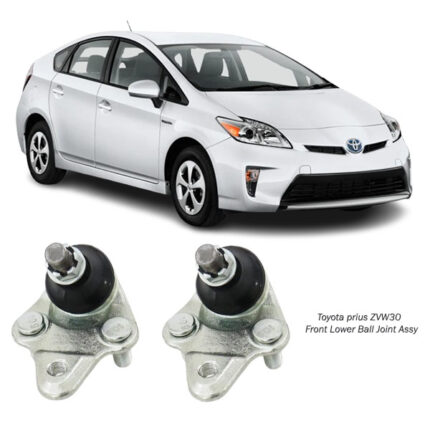-15%
Get Outer CV Joint 28X66X30 Mercedes Benz Luxuskombi 639.# 1610-639
The outer Constant Velocity (CV) joint is a pivotal component in front-wheel-drive (FWD), all-wheel-drive (AWD), and some rear-wheel-drive (RWD) vehicles, enabling the transmission of power to the wheels while accommodating the complex movements of steering and suspension. Understanding the structure, function, types, importance, and maintenance of outer CV joints is essential for vehicle performance and safety. This detailed guide delves into the intricacies of outer CV joints.
Structure of an Outer CV Joint
An outer CV joint typically comprises several key components:
- Outer Housing: The outer housing is a robust metal casing that encases the internal components of the CV joint, providing structural integrity and protection.
- Ball Bearings: High-precision ball bearings are housed within the joint, facilitating smooth rotational movement and accommodating changes in angle between the drive shaft and the wheel hub.
- Inner Race: The inner race, also known as the inner cage, holds the ball bearings and connects to the drive shaft. It rotates within the outer housing, allowing for flexible movement.
- Cage: The cage keeps the ball bearings in position, ensuring they remain evenly spaced and properly aligned within the joint.
- Boot: The CV joint boot, made of flexible rubber or thermoplastic, covers the joint, protecting it from dirt, moisture, and debris while retaining the lubricating grease inside.
- Grease: The joint is packed with high-performance grease to reduce friction, prevent wear, and ensure smooth operation of the internal components.
- Retaining Clip: The retaining clip secures the CV joint to the drive shaft, ensuring it stays in place during operation.
Function of an Outer CV Joint
The primary function of an outer CV joint is to transmit power from the transmission to the wheels while allowing for the flexible movement required during steering and suspension articulation:
- Power Transmission: The outer CV joint transmits rotational power from the drive shaft to the wheel hub, enabling vehicle movement.
- Flexibility: It accommodates changes in angle and length of the drive shaft as the wheels turn and the suspension moves. This flexibility is crucial for maintaining consistent power delivery and smooth driving dynamics.
- Steering and Suspension: The outer CV joint allows the front wheels to turn for steering while simultaneously transmitting power, ensuring responsive handling and maneuverability.
Types of Outer CV Joints
Outer CV joints can be categorized into several types based on their design and application:
- Rzeppa Joint: The most common type of outer CV joint, the Rzeppa joint features six ball bearings that move within a grooved outer housing. It offers a wide range of motion and is highly effective for front-wheel-drive vehicles.
- Tripod Joint: While more commonly used as an inner CV joint, tripod joints can also serve as outer joints in some applications. They feature three roller bearings on a trunnion that move within the joint housing.
- Double Offset Joint: This type of joint uses two sets of ball bearings to accommodate greater angular movement and axial displacement. It is often found in high-performance and off-road vehicles.
Importance of Outer CV Joints
Outer CV joints are critical for several reasons:
- Smooth Power Delivery: They ensure consistent and smooth power transmission to the wheels, providing stable and responsive driving dynamics.
- Vehicle Stability: Properly functioning outer CV joints contribute to vehicle stability by allowing for smooth steering and suspension movement while maintaining power delivery.
- Safety: A damaged or worn outer CV joint can compromise vehicle safety, leading to loss of control, poor handling, and increased risk of accidents.
- Component Longevity: By accommodating flexible movement and reducing vibrations, outer CV joints help minimize wear and tear on the drivetrain components, extending their lifespan.
Maintenance of Outer CV Joints
Proper maintenance of outer CV joints is essential to ensure their longevity and optimal performance:
- Regular Inspection: Periodically inspect the CV joint boots for signs of wear, cracks, or leaks. Damaged boots can allow dirt and moisture to enter the joint, leading to premature wear and failure.
- Lubrication: Ensure the CV joint is adequately lubricated with high-quality grease. Lubrication reduces friction, prevents wear, and ensures smooth operation of the joint.
- Boot Replacement: If the CV joint boot is damaged, replace it promptly to prevent contaminants from entering the joint and causing damage. Boot replacement is a cost-effective way to prolong the life of the CV joint.
- Professional Service: If you notice symptoms such as clicking noises, especially during turns, vibrations, or difficulty steering, have the CV joints inspected by a professional mechanic. Early detection and repair can prevent further damage and costly repairs.
Follow us on Facebook for more parts.



